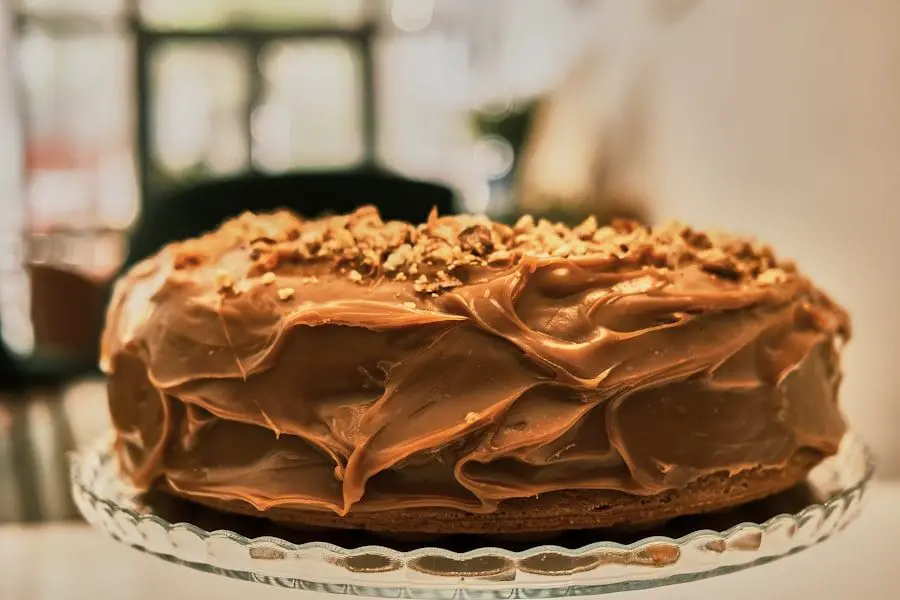
Caramel sauce is a beloved and versatile ingredient in the world of cooking and baking. Its rich, sweet, and slightly bitter flavor adds depth and complexity to a wide range of dishes, from desserts to savory dishes. Whether drizzled over ice cream, used as a filling for cakes and pastries, or incorporated into sauces and marinades, caramel sauce is a staple in many kitchens.
In this article, we will delve into the world of homemade caramel sauce, exploring the step-by-step process of making it from scratch, the science behind caramelization, tips and tricks for achieving the perfect consistency, and creative variations and uses for this delectable treat. Get ready to dive into the sweet and sticky world of caramel sauce!
Key Takeaways
- Making homemade caramel sauce is easy and only requires a few basic ingredients.
- The key ingredients for making caramel sauce are sugar, butter, heavy cream, and salt.
- To achieve the perfect caramel consistency, use a candy thermometer and be patient while cooking.
- Caramelization is a chemical process that occurs when sugar is heated and breaks down into a complex mixture of compounds.
- Homemade caramel sauce can be stored in the refrigerator for up to two weeks and reheated in the microwave or on the stove.
The Basics of Making Homemade Caramel Sauce: A Step-by-Step Guide
Making homemade caramel sauce may seem intimidating at first, but with a little patience and attention to detail, anyone can master this delicious treat. The process begins by heating sugar in a saucepan over medium heat until it melts and turns into a golden brown liquid. It is important to stir the sugar constantly to ensure even heating and prevent it from burning.
Once the sugar has melted completely and turned into a smooth liquid, butter is added to give the caramel sauce a rich and creamy texture. The butter should be added gradually, stirring constantly until it is fully incorporated. Finally, cream is added to the mixture to further enhance its richness and create a smooth consistency.
Ingredients You’ll Need to Make the Perfect Caramel Sauce
To make homemade caramel sauce, you will need a few simple ingredients: sugar, butter, cream, and salt. The sugar is the main ingredient that undergoes caramelization when heated, giving the sauce its distinct flavor and color. The butter adds richness and creaminess to the sauce, while the cream helps to create a smooth and velvety texture.
Salt is often added to caramel sauce to balance out the sweetness and enhance the flavors. It is important to use unsalted butter and adjust the amount of salt according to personal preference. Additionally, you can experiment with different types of sugar, such as brown sugar or coconut sugar, to add depth and complexity to your caramel sauce.
Tips and Tricks for Achieving the Perfect Caramel Consistency
| Tip/Metric | Description |
|---|---|
| Temperature | Use a candy thermometer to ensure the caramel reaches the desired temperature of 350°F (177°C). |
| Butter | Adding butter to the caramel mixture can help create a smoother consistency. |
| Cream | Adding cream to the caramel mixture can help create a creamier consistency. |
| Stirring | Stir the caramel mixture constantly to prevent burning and ensure even cooking. |
| Color | Watch the color of the caramel closely as it cooks. The darker the color, the more intense the flavor. |
| Water | Adding water to the sugar before cooking can help prevent crystallization and create a smoother consistency. |
| Patience | Be patient and don’t rush the cooking process. Caramel can take time to reach the perfect consistency. |
Making caramel sauce can be a delicate process, and there are a few common mistakes that can be easily avoided. One of the most important tips is to be patient and avoid rushing the process. Caramelization takes time, and it is important to allow the sugar to melt and caramelize slowly over medium heat.
Another common mistake is over-stirring the mixture once the sugar has melted. While it is important to stir the sugar constantly while it is melting, once it has turned into a smooth liquid, it is best to reduce stirring to avoid introducing air bubbles into the sauce. This can result in a grainy texture instead of a smooth and velvety consistency.
If you prefer a thicker caramel sauce, you can cook the mixture for a longer period of time to allow more moisture to evaporate. On the other hand, if you prefer a thinner consistency, you can add more cream or reduce the cooking time slightly. It is important to note that the caramel sauce will thicken as it cools, so it is best to slightly undercook it if you prefer a thinner consistency.
The Science Behind Caramelization: Understanding the Process
Caramelization is a chemical reaction that occurs when sugar is heated. During this process, the sugar molecules break down and recombine to form new compounds that give caramel its distinct flavor and color. The heat causes the sugar molecules to break apart into simpler sugars, which then react with each other to form new compounds.
The browning of the sugar is caused by a process called the Maillard reaction, which occurs when sugars and proteins react at high temperatures. This reaction produces a complex mixture of compounds that give caramel its rich and complex flavor. The longer the sugar is heated, the more intense the flavor and color of the caramel sauce will be.
The temperature at which caramelization occurs is around 320°F (160°C). It is important to monitor the temperature closely to avoid burning the sugar. Once the sugar reaches this temperature, it can quickly go from golden brown to burnt if left unattended. It is best to remove the saucepan from the heat as soon as the desired color is achieved.
How to Store and Reheat Your Homemade Caramel Sauce

Once you have made your homemade caramel sauce, you may be wondering how to store it and reheat it without compromising its texture or flavor. Caramel sauce can be stored in an airtight container in the refrigerator for up to two weeks. It is important to use a container that is specifically designed for storing liquids, such as a glass jar or a plastic container with a tight-fitting lid.
When reheating caramel sauce, it is best to do so slowly over low heat. This will help to prevent the sauce from separating or becoming grainy. You can reheat it on the stovetop in a saucepan, stirring constantly until it reaches the desired temperature. Alternatively, you can reheat it in the microwave in short intervals, stirring in between each interval.
It is important to note that caramel sauce will thicken as it cools, so you may need to add a little cream or milk when reheating it to achieve the desired consistency. Be sure to stir the sauce well after reheating to ensure that it is smooth and creamy.
Variations on Classic Caramel: Experimenting with Flavors
While classic caramel sauce is delicious on its own, you can also experiment with different flavors to create unique and exciting variations. One popular variation is vanilla caramel sauce, which is made by adding vanilla extract or vanilla bean paste to the mixture. This adds a subtle and fragrant flavor that pairs well with a wide range of desserts.
Another popular variation is cinnamon caramel sauce, which is made by adding ground cinnamon to the mixture. This adds a warm and spicy flavor that is perfect for fall and winter desserts. You can also experiment with other spices, such as nutmeg or cardamom, to create your own unique flavor combinations.
For those who enjoy a little kick of alcohol in their desserts, bourbon caramel sauce is a great option. Simply add a splash of bourbon to the mixture after adding the cream, and stir well to incorporate. The bourbon adds a rich and smoky flavor that pairs well with chocolate desserts or drizzled over ice cream.
Caramel Sauce in Baking: Incorporating Caramel into Your Favorite Recipes
Caramel sauce is not only delicious on its own, but it can also be incorporated into a wide range of baked goods to add depth and complexity to your favorite recipes. One classic example is caramel apple pie, where the caramel sauce is drizzled over the apples before baking. This creates a gooey and sweet filling that pairs perfectly with the flaky crust.
Another popular option is caramel cheesecake, where the caramel sauce is swirled into the cheesecake batter before baking. This creates pockets of caramel throughout the cheesecake, adding a burst of sweetness with every bite. You can also use caramel sauce as a topping for brownies, cookies, or cupcakes to add an extra layer of flavor.
If you’re feeling adventurous, you can even use caramel sauce as an ingredient in savory dishes. For example, you can use it as a glaze for roasted meats or as a base for barbecue sauce. The sweetness of the caramel sauce adds a unique and unexpected twist to savory dishes, creating a perfect balance of flavors.
Salted Caramel: A Sweet and Savory Delight
Salted caramel has become incredibly popular in recent years, and for good reason. The combination of sweet and salty flavors creates a delightful contrast that is both addictive and satisfying. Making salted caramel at home is surprisingly easy, and it can be used in a variety of ways to enhance both sweet and savory dishes.
To make salted caramel, simply add a pinch of salt to the caramel sauce after it has cooled slightly. Stir well to incorporate the salt evenly throughout the sauce. The amount of salt can be adjusted according to personal preference, but be careful not to add too much, as it can overpower the sweetness of the caramel.
Salted caramel is delicious on its own, but it can also be paired with a wide range of foods to create unique and exciting flavor combinations. For example, drizzle it over vanilla ice cream for a sweet and salty treat, or dip pretzels or popcorn into it for a savory snack. You can also use it as a filling for chocolates or as a topping for pancakes or waffles.
Caramel Sauce as a Gift: Packaging and Presentation Ideas
Homemade caramel sauce makes a wonderful gift for friends and family, especially during the holiday season. To package your caramel sauce as a gift, you can use small glass jars or plastic containers with tight-fitting lids. Be sure to clean and sterilize the containers before filling them with the sauce to ensure freshness.
To add a personal touch, you can create custom labels for your caramel sauce jars. You can use printable labels or handwrite them for a more rustic look. You can also tie ribbons or twine around the jars to add a decorative touch. If you’re feeling extra creative, you can even decorate the jars with stickers or paint to make them truly unique.
To make the gift even more special, you can pair the caramel sauce with other homemade treats, such as cookies, brownies, or cakes. You can also include a bag of coffee or a box of tea to create a complete gift set. Be sure to include instructions for reheating and serving the caramel sauce, as well as any storage recommendations.
Frequently Asked Questions About Making Homemade Caramel Sauce
1. How long does homemade caramel sauce last?
Homemade caramel sauce can be stored in the refrigerator for up to two weeks. It is important to keep it in an airtight container to prevent it from absorbing any odors from other foods in the refrigerator.
2. Can I freeze homemade caramel sauce?
Yes, you can freeze homemade caramel sauce for up to three months. It is best to store it in small portions in freezer-safe containers or zip-top bags. Be sure to label the containers with the date and contents for easy reference.
3. My caramel sauce turned out grainy. What did I do wrong?
Grainy caramel sauce is usually caused by over-stirring the mixture after the sugar has melted. Once the sugar has turned into a smooth liquid, it is best to reduce stirring to avoid introducing air bubbles into the sauce. This can result in a grainy texture instead of a smooth and velvety consistency.
4. Can I adjust the consistency of my caramel sauce?
Yes, you can adjust the consistency of your caramel sauce by cooking it for a longer or shorter period of time. If you prefer a thicker caramel sauce, you can cook the mixture for a longer period of time to allow more moisture to evaporate. On the other hand, if you prefer a thinner consistency, you can add more cream or reduce the cooking time slightly.
The Endless Possibilities of Homemade Caramel Sauce
In conclusion, homemade caramel sauce is a versatile and delicious treat that can be enjoyed in a variety of ways. Whether drizzled over ice cream, used as a filling for cakes and pastries, or incorporated into savory dishes, caramel sauce adds depth and complexity to any dish.
By following a few simple steps and paying attention to detail, anyone can make homemade caramel sauce from scratch. With a little patience and experimentation, you can create your own unique variations and uses for this delectable treat.
So go ahead, dive into the sweet and sticky world of homemade caramel sauce and let your creativity run wild. The possibilities are endless!
If you’re a fan of caramel sauce, you’ll love this article on Flavorful Sips that explores the rich history and cultivation of black grapes. Discover the journey into the vineyard and learn about the unique flavors and characteristics of these delicious fruits. Whether you’re a wine enthusiast or simply enjoy the sweetness of grapes, this article is a must-read. Check it out here!



